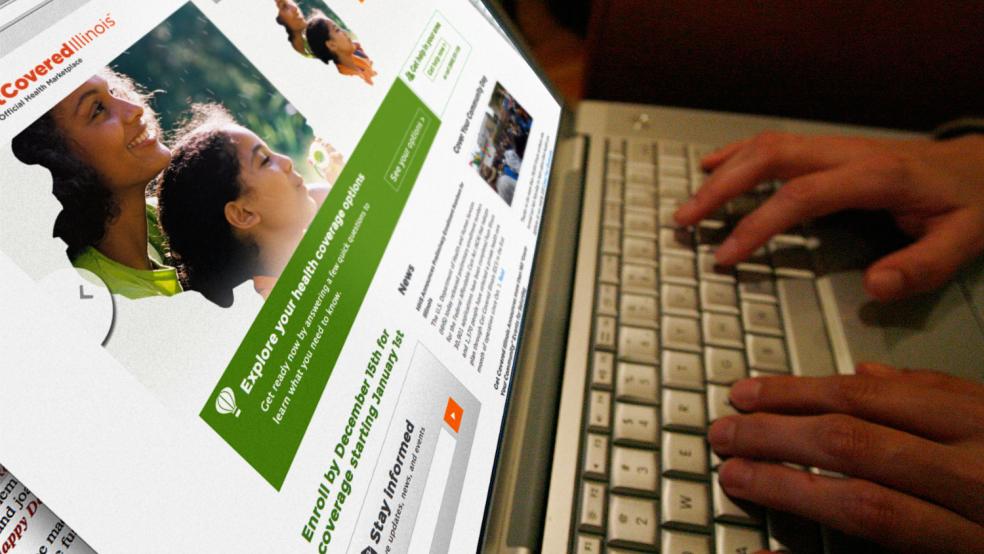As federal health care officials desperately search for a "Plan B" to save the botched HealthCare.gov rollout, state programs have been having better success in getting people enrolled.
The District of Columbia and 14 states are running their own insurance marketplaces. In contrast with HealthCare.gov, which officials claim will be functional for most users by Nov. 30, many of those states are already reporting consistently higher enrollment numbers this month.
In California, more than 30,000 people signed up through the state system in October. That's roughly one-third of the total signed up for the entire country. Another 29,000 Californians enrolled through Nov. 12.
Enrollments are ahead of projections in Connecticut and Kentucky and Minnesota. Sign-ups in Minnesota, for example, are running triple the rate in the second half of October compared to the first half, officials report.
Related: Tech Experts on HealthCare.gov: Shut It Down
The state exchanges represent a fraction of the potential market for new health insurance customers, though, as they are home to a third of the country’s population. Nationwide, the majority of the country is still hobbled by the unresolved technical woes of HealthCare.gov. Only 106,000 have selected a marketplace plan, the Department of Health and Human Services said last week. Nearly half of those signed up in October were in New York and California, both of which prepared on their own for the marketplace rollout.
Federal officials hoped that more than five times that number would've been able to sign up by now.
A PROFILE OF ONE STATE
I had a chance to talk to some of the "on the ground" officials involved with the Illinois program, which partners with the troubled federal site. They were assembled recently for a conference of reporters sponsored by the health research organization Commonwealth Fund and the Society of American Business Editors and Writers, a business journalist's group of which I'm a member. I also was a co-organizer of the conference.
Other than the technical issues, the key frustration state officials have is getting the word out: If your income qualifies, you can sign up for Medicaid. If not, then the exchange may be able to offer you a private policy at a lower, subsidized cost. You can't know for certain until you go through the state exchange interfaces, many of which still don't work.
In Illinois, which can be charitably described as politically dysfunctional owing to its $100 billion pension debt and sinking bond ratings, there have been extensive preparations for the state's role in the ACA. Some 1,300 assistants or "navigators" had been hired to shepherd people through the system, according to Illinois Deputy Governor Cristal Thomas. The state's HealthCare.gov call center has received more than 13,000 calls.
Over the first month of open enrollment, though, only 1,370 out of more than 56,000 applying for coverage have picked an insurance plan. The state had projected that nearly half a million residents and small businesses would apply for the insurance through the exchange.
"We anticipated some glitches," Thomas said, "but this took us by surprise."
Like most state systems, the "getcoveredillinois" site involves several layers. There's an interface to see if you qualify for Medicaid, which has apparently worked much better than the federal site. More than 47,000 have applied for the public insurance. When HealthCare.gov is functional, Thomas said they can deploy their statewide assistance program and have $33 million set aside to get the word out.
What if HealthCare.gov isn't working by Nov. 30? Like many, Thomas suggested that the federal government might extend the deadline for enrollment. Other than that, there was no new information on exactly what was going on with the federal site.
OTHER STATES STRUGGLING WITH ENROLLMENTS
Illinois is hardly alone. In Alaska, Delaware, North Dakota, South Dakota and Wyoming, less than 100 people (in each state) had signed up for a plan out of thousands of applications submitted through October. The lowest sign-up numbers were in states defaulting to the federal plan.
The sign-up rate is far below what officials had hoped to garner in the program's first month. Although the entire process will take more than a year, the government had hoped to provide insurance to some 22 million Americans, with 7 million projected to obtain coverage through the exchanges by the March 31 penalty-free deadline.
Aside from the well-publicized technical debacle, potential enrollees just might be waiting to sign up due to lack of communication and confusion. Having spent time on the system – at least on the part that can show you policies upfront – the decision-making process can be complicated by myriad choices.
Do you try to save money and choose a rock-bottom-priced "catastrophic" or "bronze" plan? Do you go for less out-of-pocket exposure and opt for the "silver," "gold" or "platinum" packages that offer the trade-off of higher premiums for up to 90 percent coverage?
For millions who've never had private insurance, the communication and education provided will be essential, especially in comparing the policies and the premiums after subsidies are applied.
Keep in mind, too, that many are waiting to see if the HealthCare.gov problems are resolved or may just be waiting until the deadline, Dec. 15. When Massachusetts offered its statewide plan in 2006, only 123 of the more than 36,000 who signed up did so in the first month.
There's yet another wrinkle over whether those with cancelled private plans will get to keep them – President Obama has asked insurers to allow that. The snafu has only added to the political animus generated by the botched start-up.
Both federal and state officials, however, are probably more concerned about the "death spiral" that could occur if potential applicants get discouraged, lose interest and abandon the exchanges in droves over the next five months. It could be the equivalent of people staying away from a fading restaurant.
Top Reads from The Fiscal Times:






